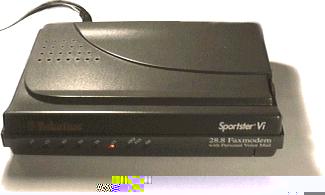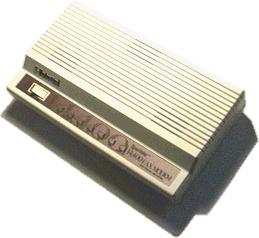




A modem sends data to other modems in electronic pieces, called bits. The speed a modem sends this data is measured in bits per second, called bps on the modem's packaging. The most common speed at the moment is 14,400 bits per second (or 14.4k for short), but this fast being replaced by the higher speed 28,800bps (28.8k). By using a faster modem you decrease the amount of waiting times for downloading and uploading graphics and text, so you save time and money through lower 'phone charges. So, although 28.8k modems are initially more expensive they can pay for themselves in the long run.
Although the Voyager software at the heart of the ArgoNet service will work with any Hayes compatible modem, ArgoNet can supply modems in two different speeds. These are both U.S. Robotics Sportsters, the simplicity, reliability and economy of these units having made them the world's best-selling modem.





